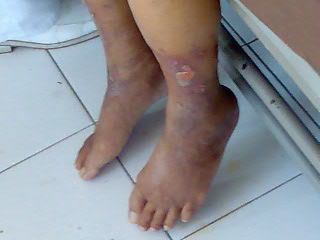HEART DISEASE
Diabetics are more than four times as likely to have a heart attack or stroke.
-
Heart diseases and stroke are the #1 killers and causes of disability among people with type 2 diabetes.
-
Over 65% percent of people with diabetes die from heart disease or stroke.
What is Heart Disease?
Heart disease occurs when blood vessels become partially or fully blocked by fatty deposits (also known as plaque). Build up of plaque narrows the vessels and makes it harder for blood to flow. Resulting blood clots can result in a heart attack or a stroke.
HEART ATTACK
If blood supply to the heart is reduced or cut off and heart muscle is damaged or dies.
Signs of a Heart Attack
- Chest pain/discomfort
- Shortness of Breath
- Pain/discomfort in arms, back, jaw, neck, or stomach
- Nausea
- Fatigue
- Sweating
- Light-Headedness
If blood supply to the brain is reduced or cut off.
Brain tissue is damaged and it can affect movement, thinking, and speaking abilities.
Your risk of having a stroke are 2 to 4 times higher if you are a diabetic.Signs of a Stroke
- Weakness/numbness on one side of body
- Sudden confusion
- Trouble talking
- Dizziness/loss of Balance
- Trouble with vision in one or both eyes
- Double vision
- Severe headache
Diabetics (usually Type 2) often also suffer from conditions that increase Heart Disease
-
Hypertension (high blood pressure)
-
High Cholesterol and Triglyceride levels
-
Obesity
-
Poorly Controlled blood sugars
To reduce risk, monitor your ABC’s!
· A is for A1C: (average blood glucose for the past 2 to 3 months)
· B is for blood pressure
· C is for cholesterol (amount of fat in your blood)
Other conditions:
PAD: Peripheral arterial disease
-
Blood vessels in the legs are narrowed or blocked by fatty deposits
-
Blood flow to your feet and legs decreases.
If you have PAD, you have an increased risk for heart attack and stroke.
An estimated 1 out of every 3 people with diabetes over the age of 50 have this condition.
Risk Factors Include: smoking, hypertension, abnormal cholesterol levels, overweight, Not physically active, history of heart disease, over 50 years of age
Signs of PAD
- Leg pain with activity
- Numbness/tingling/coldness in lower legs and feet
- Slowly healing sores and infections on feet
Diabetic Cardiomyopathy
- Damage to heart structure and function
- It can lead to heart failure and arrhythmia, even in people who have diabetes but don’t otherwise have heart disease.
(Picture Source: WiseGeek.com)
